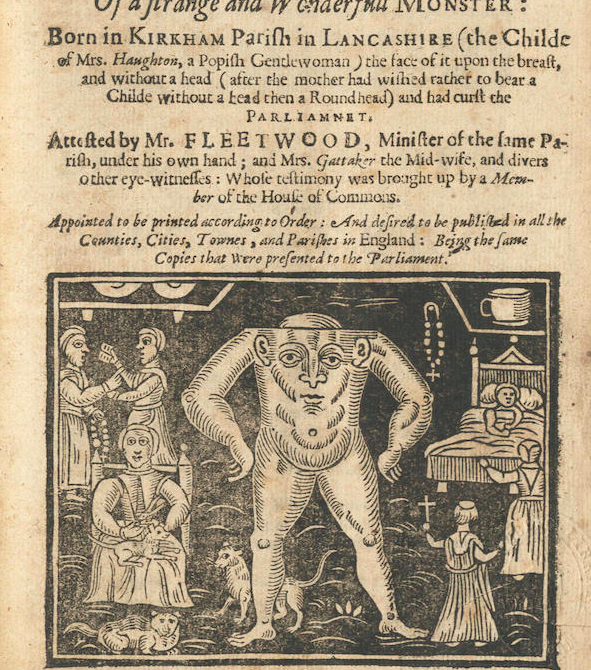In the days before modern medicine – indeed, the days when sex was so fluid that girls could spontaneously turn into boys if they got too hot (more on that another time?) – starting a family was not only a dangerous, but a very mysterious business.
In the news this week, a ‘Georgian’ sex manual up for auction (most of which was written in the 1680s but let’s not split hairs). In it, handy hints on how to improve fertility, and increase your chances of having a strong, male child (or, if your standards are particularly low, simply a human one). Though springing from pre-Enlightenment superstition, its continuing popularity throughout the 18th and 19th centuries shows the persistence of such folkloric beliefs, and general interest in sexual matters, when new medical discoveries might not always filter down to the masses.
With the mysteries of reproduction not yet uncovered by science, ‘true’ accounts of ‘monstrous’ births continued to enthrall and trouble the public. And one possible reason for such deformities? The mother’s roving imagination! Clearly some fathers had more to worry about than whether their wife was going to give birth to another man’s child. Let loose with her own imagination – whether through a sudden shock or some unclean mental fixation during the sexual act – she could mould his unborn child into something quite unusual. A woman was, apparently, more at risk if she:
1. was a ‘low, country woman’, especially if she lived by the seaside
2. married a sailor
3. had sex during menstruation
4. gave in to beastly, unruly lusts
5. had strong emotions or made impassioned speeches
For a fuller accounts you can read the relevant section of Aristotle’s Masterpiece online here, but in the meantime, a couple of (dubious) reports of maternal imagination in action…
1646: A woman’s political ravings leave her baby without a head

“STRANGE AND WONDERFUL MONSTER
A Declaration of a Strange and Wonderull Monster: Born in Kirkham Parish in Lancashire (the Childe of Mrs. Haughton, a Popish Gentlewoman) the Face of it Upon the Breast, and Without a Head (after the Mother has Wished Rather to Bar a Childe without a Head than a Roundhead) and Had Curst the Parliament, large woodcut illustration on the title, modern half morocco, gilt lettered spine [Wing D602], small 4to, Printed by Jane Coe, 1646″
January 1790: A scare with a dog leaves a child entirely canine, with human feet

“The wife of a coal-heaver, who resides in Shakspere-Walk, Lambeth, was lately delivered of a very singular phenomenon:
It was in every respect the exact semblance of a dog, except the feet, which were natural. It was immediately destroyed by Dr. dunning, who was present at the time. The woman died soon after.
It is thus accounted for. Soon after her pregnancy, on going into a coal wharf where her husband worked, a mastiff dof that had been carelessly let loose, suddenlt seized her cloaths, and was so savage, that he was with much difficulty forced to loose his hold. She was much terrified, but very little hurt, and went home, and continued her avocation as usual.
She felt little inconvenience in any respect, except becoming very voracious in her appetite, and would devour five or six pounds of meat daily, without being satisfied; which is attributed to the devouring appetite of the monster of which she was pregnant.”

Remarkable stories, remarkable too the power of imagination.
Though having said that, the ‘headless child’ was probably anencephalic — though that is far too mundane an explanation!
Goodness, I don’t know whether to be amused or sad. Humans will come up with anything to explain why things happen, and it almost always falls on the woman. I mean, impassioned speeches, for crying out loud! I love learning about history and women’s history.